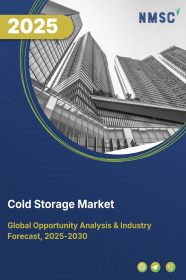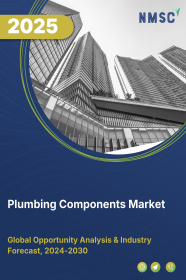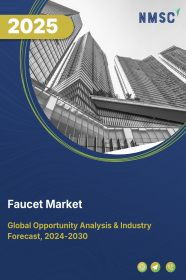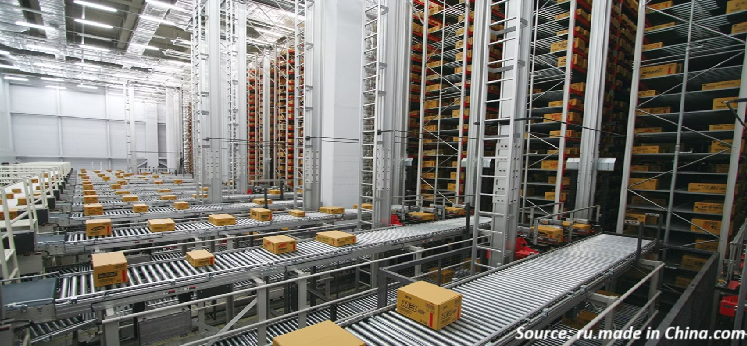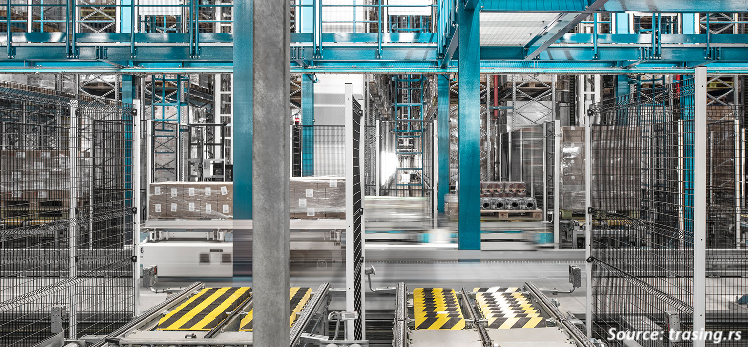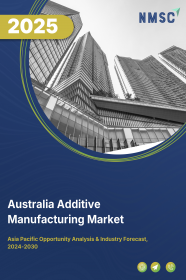
Australia Additive Manufacturing Market by Type (Desktop 3D Printer and Industrial 3D Printer), by Technology (Stereolithography, Fused Deposition Modeling, Selective Laser Sintering, Direct Metal Laser Sintering, Polyjet Printing, Inkjet Printing, Electron Beam Melting, Laser Metal Deposition, Digital Light Processing, Laminated Object Manufacturing, and Other Technology), and Others – Opportunity Analysis and Industry Forecast, 2024–2030
Industry: Construction & Manufacturing | Publish Date: 14-Feb-2025 | No of Pages: 138 | No. of Tables: 102 | No. of Figures: 67 | Format: PDF | Report Code : CM665
US Tariff Impact on Australia Additive Manufacturing Market
Trump Tariffs Are Reshaping Global Business
Australia Additive Manufacturing Market Overview
Australia Additive Manufacturing Market size was valued at USD 65.2 million in 2023, and is predicted to reach USD 197.0 million by 2030, at a CAGR of 15.5% from 2024 to 2030. In terms of volume, the market size was 2 thousand units in 2023, and is projected to reach 8 thousand units by 2030, with a CAGR of 16.9% from 2024 to 2030.
The additive manufacturing (AM) market, also known as additive layer manufacturing (ALM) or three-dimensional (3D) printing, is a global industry focused on the development, production, and distribution of technologies and materials for creating three-dimensional objects layer by layer from digital models. This market serves a variety of sectors, including aerospace, automotive, healthcare, and consumer goods, by offering advanced solutions for prototyping, production, and customized manufacturing.
AM is highly valued for its ability to produce intricate and personalized components while minimizing material waste, leading to significant cost savings and environmental benefits. A key feature of this market is its diverse range of printing technologies, such as stereolithography (SLA), selective laser sintering (SLS), and fused deposition modeling (FDM), each designed to meet specific industry needs and applications. Additionally, AM's capability for rapid prototyping shortens product development cycles, enabling businesses to innovate and bring products to market more quickly than traditional manufacturing methods.
Implementation of Government Initiatives Drives the Demand for Additive Manufacturing
The Australian government is significantly boosting the demand for additive manufacturing (AM) through various initiatives aimed at advancing manufacturing technologies. By providing substantial funding, grants, and policy support, the government is fostering innovation and encouraging the adoption of AM.
These governmental initiatives facilitate collaboration between research institutions, industry, and government, driving the development and commercialization of cutting-edge AM technologies.
In 2023, the Australian government enacted the National Reconstruction Fund Corporation Act to invest in manufacturing technologies and products that enhance the country's industrial capabilities, including the development of AM as part of advancing manufacturing technologies. This extensive support framework is driving strong demand for AM by promoting technological advancement, positioning Australia as a leader in advanced manufacturing.
Rising Advancement in the Aerospace Sector Boosts the Growth of the Market
The advancement of the aerospace sector is further propelling the Australia additive manufacturing market growth due to the technology's ability to produce lightweight, high-performance components essential for aerospace applications. AM enables rapid prototyping, cost-efficient production, and the creation of complex geometries, which are crucial for innovation and efficiency in aerospace manufacturing.
In March 2024, Australia's first multi-metal 3D printing, the Nikon SLM-280, was launched at the Commonwealth Scientific and Industrial Research Organisation (CSIRO) Lab22 facility in Melbourne as part of the iLAuNCH Trailblazer initiative.
This advanced printer can produce high-performance, lightweight aerospace components, potentially reducing costs and improving efficiency in space missions. It supports the development of novel superalloys and benefits the Australian aerospace, defense, and racing industries by offering faster production times and enhanced material capabilities, fueling the demand for AM in the country.
High Upfront Investment Restrains Market Growth
The substantial upfront investment required for equipment, materials, and training presents a significant obstacle to market expansion. This financial commitment poses a notable challenge for businesses, particularly smaller ones, limiting their capacity to enter or expand operations within the additive manufacturing market.
Additionally, ongoing expenses related to materials and training further increase the overall financial burden. Consequently, many businesses are hesitant to adopt AM technology due to these initial financial challenges, thereby impeding the potential of the Australia additive manufacturing market expansion.
Integration of Artificial Intelligence (AI) in Additive Manufacturing Presents Lucrative Opportunity for Market Expansion
Integrating artificial intelligence (AI) into additive manufacturing (AM) is anticipated to expand the 3D printing market by refining production processes, enhancing product design capabilities, and facilitating the creation of intricate and personalized objects. AI integration enables businesses to analyze extensive datasets gathered during printing, such as material properties, printing parameters, and environmental conditions. This analysis helps identify patterns, optimize settings, and predict potential defects, thereby improving printing precision and reducing material waste.
Competitive Landscape
The prominent key players operating in Australia additive manufacturing industry include CAC Works, 3D Forge, E-Jet 3D Printing, Parallax Studio, Infinity 3D Printing, Titomic, Conflux Technology, Amaero, Aurora Labs, Spee3D, and others.
Australia Additive Manufacturing Market Key Segments
By Type
-
Desktop 3D Printer
-
Industrial 3D Printer
By Technology
-
Stereolithography
-
Fused Deposition Modeling
-
Selective Laser Sintering
-
Direct Metal Laser Sintering
-
Polyjet Printing
-
Inkjet Printing
-
Electron Beam Melting
-
Laser Metal Deposition
-
Digital Light Processing
-
Laminated Object Manufacturing
-
Other Technology
By Component
-
Hardware
-
Software
-
Design Software
-
Inspection Software
-
Printer Software
-
Scanning Software
-
-
Services
By Application
-
Prototyping
-
Tooling
-
Functional Parts
By End User
-
Desktop Additive Manufacturing
-
Educational Purpose
-
Fashion & Jewellery
-
Objects
-
Dental
-
Food
-
Other Desktop Additive Manufacturing
-
-
Industrial Additive Manufacturing
-
Automotive
-
Aerospace & Defense
-
Healthcare
-
Consumer Electronics
-
Power & Energy
-
Other Industrial Additive Manufacturing
-
Key Players
-
CAC Works
-
3D Forge
-
E-Jet 3D Printing
-
Parallax Studio
-
Infinity 3D Printing
-
Titomic
-
Conflux Technology
-
Amaero
-
Aurora Labs
-
Spee3D
REPORT SCOPE AND SEGMENTATION:
|
Parameters |
Details |
|
Market Size Value in 2023 |
USD 65.2 million |
|
Revenue Forecast in 2030 |
USD 197.0 million |
|
Growth Rate |
CAGR of 15.5% from 2024 to 2030 |
|
Market Volume in 2023 |
2 thousand units |
|
Market Forecast in 2030 |
8 thousand units |
|
Volume Growth Rate |
CAGR of 16.9% from 2024 to 2030 |
|
Analysis Period |
2023–2030 |
|
Base Year Considered |
2023 |
|
Forecast Period |
2024–2030 |
|
Market Size Estimation |
Million (USD) |
|
Growth Factors |
|
|
Companies Profiled |
10 |
|
Market Share |
Available for 10 companies |
|
Customization Scope |
Free customization (equivalent up to 80 working hours of analysts) after purchase. Addition or alteration to country, regional, and segment scope. |
|
Pricing and Purchase Options |
Avail customized purchase options to meet your exact research needs. |

















 Speak to Our Analyst
Speak to Our Analyst



